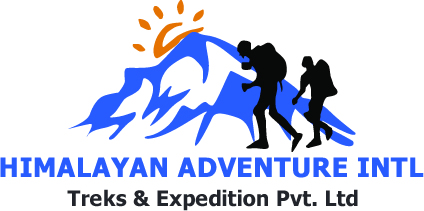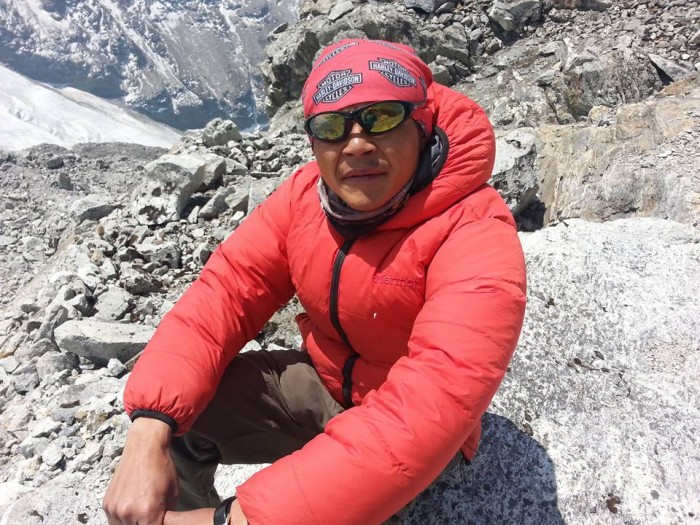The journey to Kailash Mansarovar is not just a pilgrimage; it is a sacred adventure that awakens the soul and humbles the heart. Every year, thousands of devotees from around the world, especially from India and Nepal, embark on this spiritually transformative expedition. Among the many routes available, the Simikot to Kailash Mansarovar Yatra by helicopter via Nepalgunj and Hilsa has become a highly popular and efficient route.
Himalayan Adventure International Treks brings you a comprehensive guide to everything you need to know about the Kailash Mansarovar Yatra 2025/26—from flight prices and distances to detailed helicopter packages, costs, and accessibility options.
Kailash Mansarovar and the Spiritual Significance
Mount Kailash, located in the remote southwestern corner of Tibet, is revered as the abode of Lord Shiva by Hindus, as the navel of the universe by Buddhists, and as a spiritual center by Jains and Bon followers. Near this sacred peak lies Lake Mansarovar, believed to be one of the highest freshwater lakes in the world and a source of spiritual cleansing.
Performing the Kailash Mansarovar Parikrama and taking a holy dip in Mansarovar Lake is a lifetime dream for many. But due to its high altitude and restricted access, this pilgrimage requires proper planning and guidance.
Why Choose the Simikot Route via Nepal?
The Simikot to Kailash Mansarovar route through Nepalgunj and Hilsa is one of the safest and most convenient alternatives compared to the rugged land routes from India or the longer traditional trek. It combines road travel, domestic flights, and helicopter access to make the journey smoother and faster.
Advantages of the Simikot Route:
-
Shorter travel time
-
Helicopter access over challenging terrain
-
More scenic and culturally immersive experience
-
Available for both Indian and international travelers
-
Less physically demanding than full trekking routes
Route Overview: Kathmandu – Nepalgunj – Simikot – Hilsa – Purang – Kailash Mansarovar
Here is a step-by-step travel breakdown for this route:
-
Kathmandu to Nepalgunj (By flight or road)
-
Nepalgunj to Simikot (By flight)
-
Simikot to Hilsa (By helicopter)
-
Hilsa to Purang (By road)
-
Purang to Mansarovar & Mount Kailash (By road and trek)
Kathmandu to Nepalgunj by Road or Air
-
Distance: Approx. 510 km by road
-
By Flight: Takes about 1 hour
-
By Road: Takes 12–14 hours depending on traffic and road conditions
-
Cost by Road: Approx. USD 50–100
-
Cost by Flight: USD 120–150 per person
Nepalgunj to Simikot Flight Price & Details
-
Distance: Approx. 291 km
-
Flight Duration: Around 45 minutes
-
Nepalgunj to Simikot Flight Price: Ranges between USD 150–250, depending on season and seat availability
Flights are operated by small aircraft, and schedules depend on weather conditions, especially in the monsoon and winter months.
Simikot to Hilsa Distance & Helicopter Route
-
Simikot to Hilsa Distance: Approx. 51 km (aerial)
-
Travel Method: Helicopter
-
Duration: 20–25 minutes
-
Helicopter Package Price: Usually included in the full Kailash Mansarovar Yatra cost package
The helicopter ride from Simikot to Hilsa offers dramatic Himalayan views and saves significant time and physical exertion.
Hilsa to Purang (Tibet Side)
Once in Hilsa, travelers cross the Friendship Bridge into Tibet and go through immigration. From there, a short jeep ride takes you to Purang (Taklakot)—a Tibetan town with basic accommodations for acclimatization.
Purang to Kailash Mansarovar: Final Leg
From Purang, a combination of jeep rides and light treks takes pilgrims to Lake Mansarovar and then to Mount Kailash for the parikrama (circumambulation).
How to Reach Simikot?
You cannot reach Simikot directly from Kathmandu by road. The most common route is:
Note: There is no feasible Kathmandu to Simikot by road route due to the challenging terrain. The distance and time would be impractical for most travelers.
Can We Go to Mount Kailash by Helicopter?
Yes, Mount Kailash can be accessed via helicopter as part of the Simikot-Hilsa route. However, the helicopter only goes up to Hilsa. After crossing into Tibet, the journey continues by road and on foot.
Kailash Mansarovar Yatra by Helicopter from Kathmandu
For those short on time or seeking a comfortable journey, Himalayan Adventure International Treks offers a full helicopter package from Kathmandu, including:
-
Flights from Kathmandu to Nepalgunj
-
Nepalgunj to Simikot flight
-
Simikot to Hilsa helicopter ride
-
Road transport in Tibet
-
All necessary permits and accommodations
Kailash Mansarovar Yatra 2025 by Indian Government
The Indian Government organizes the Kailash Mansarovar Yatra 2025 through two main routes:
-
Lipulekh Pass (Uttarakhand)
-
Nathu La Pass (Sikkim)
While these are subsidized and allow Indian pilgrims to go via Indian soil, the process is highly bureaucratic and competitive. Only a limited number of applicants are selected via lottery.
Alternative from Nepal: Many Indian pilgrims prefer traveling via Nepal for its ease of access, fewer formalities, and helicopter convenience.
Kailash Mansarovar Yatra 2025/26 from Nepal (Himalayan Adventure Intl Treks)
Our 2025/26 Yatra from Nepal includes:
-
Kathmandu sightseeing
-
Flight to Nepalgunj
-
Helicopter and flight coordination
-
All meals, permits, and support team
-
Accommodations and emergency evacuation support
Kailash Mansarovar Yatra 2025/26 Isha Connection
Many spiritual seekers inspired by Sadhguru and Isha Foundation embark on this journey to align themselves with universal energies. Himalayan Adventure International Treks respects all spiritual traditions and offers flexible schedules to accommodate group or private yatras in harmony with your practices.
How Much Does It Cost to Go to Kailash Mansarovar?
The cost depends on the package, duration, and inclusion. Here's a breakdown:
| Package |
Estimated Cost (USD) |
Inclusions |
| Standard Helicopter Package (12 Days) |
$2,800 – $3,200 |
Flights, Helicopter, Meals, Permits, Guide, Accommodations |
| Luxury Package |
$3,500+ |
Private vehicles, luxury stay in Kathmandu, more inclusions |
| Budget Land Package (via India) |
$1,800 – $2,200 |
Longer duration, lower comfort |
Why is Kailash Mansarovar Costly?
-
High-altitude logistics
-
Remote transport (flights + helicopters)
-
Permits and Tibet entry fees
-
Limited seasonal accessibility
-
Medical and emergency backup systems
All these factors contribute to the premium pricing of the yatra, especially from Nepal.
How Much Does It Cost to Go to Kailash from Nepal?
When going through Nepal:
-
Average Cost: $2,800 to $3,200 per person (helicopter route)
-
Includes: Kathmandu to Simikot flights, helicopters, permits, transport, lodging, meals, and guide services
What is the Helicopter Package for Kailash Mansarovar?
At Himalayan Adventure International Treks, our Helicopter Package Includes:
-
12-day guided tour from Kathmandu
-
Kathmandu – Nepalgunj – Simikot – Hilsa flights/helicopters
-
Full board meals
-
Tibet visa and Kailash permit
-
Jeep transport in Tibet
-
Accommodation in guest houses/hotels
-
Yatra medical kits and oxygen
-
Emergency evacuation insurance (optional extra)
Detailed Itinerary: Kailash Mansarovar Yatra by Helicopter (12 Days)
Day 1: Arrival in Kathmandu
Day 2: Kathmandu sightseeing & preparation
Day 3: Fly to Nepalgunj
Day 4: Fly to Simikot
Day 5: Helicopter to Hilsa, drive to Purang
Day 6: Rest and acclimatization in Purang
Day 7: Drive to Mansarovar
Day 8: Drive to Darchen, start Parikrama
Day 9: Trek to Diraphuk
Day 10: Trek to Zuthulphuk via Dolma La Pass
Day 11: Complete Parikrama, drive to Purang
Day 12: Return to Hilsa, Simikot, Nepalgunj, and Kathmandu
Key Travel Distances Summary
| Route |
Distance |
| Nepalgunj to Simikot Distance (by air) |
~291 km |
| Nepalgunj to Simikot Distance by Road |
Not practical |
| Simikot to Hilsa Distance |
~51 km |
| Kathmandu to Simikot by Road |
Impractical (best via air) |
Embarking on the Kailash Mansarovar Yatra from Simikot via helicopter is more than a journey—it's a spiritual calling. With the right partner like Himalayan Adventure International Treks, you can experience this pilgrimage safely, comfortably, and meaningfully.
Whether you’re seeking divine connection, cultural exploration, or natural wonders, the Simikot to Kailash Mansarovar Yatra 2025/26 offers a path that merges all three.
Ready to Begin Your Kailash Yatra?
Contact Himalayan Adventure International Treks Pvt. Ltd. today to reserve your spot for the 2025/26 Yatra.
📞 Phone: +977-9803526139
📧 Email: info@himalayanadventureintl.com
🌐 Website: www.himalayanadventureintl.com

 Plan Your Trip Now
Plan Your Trip Now 


